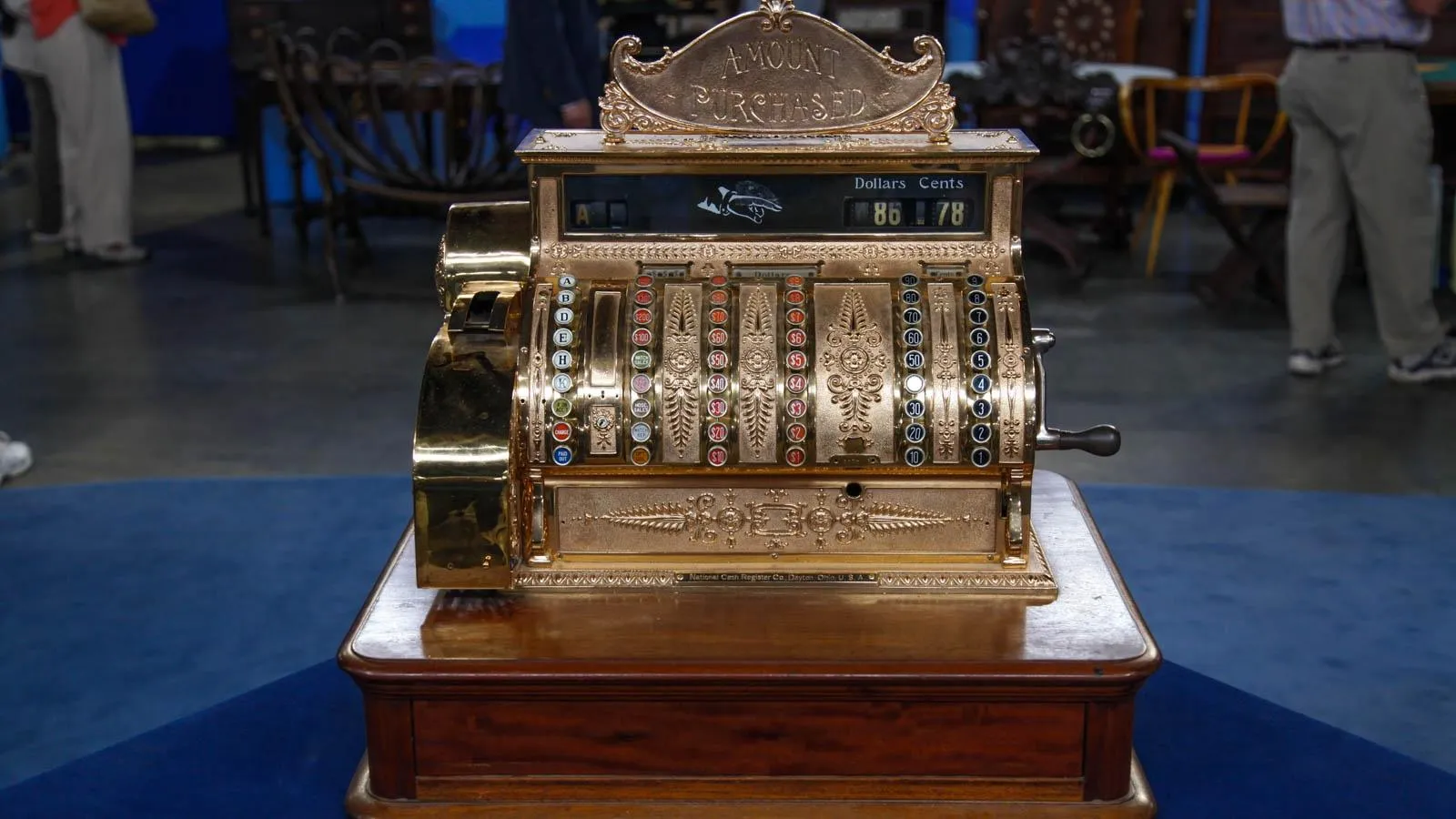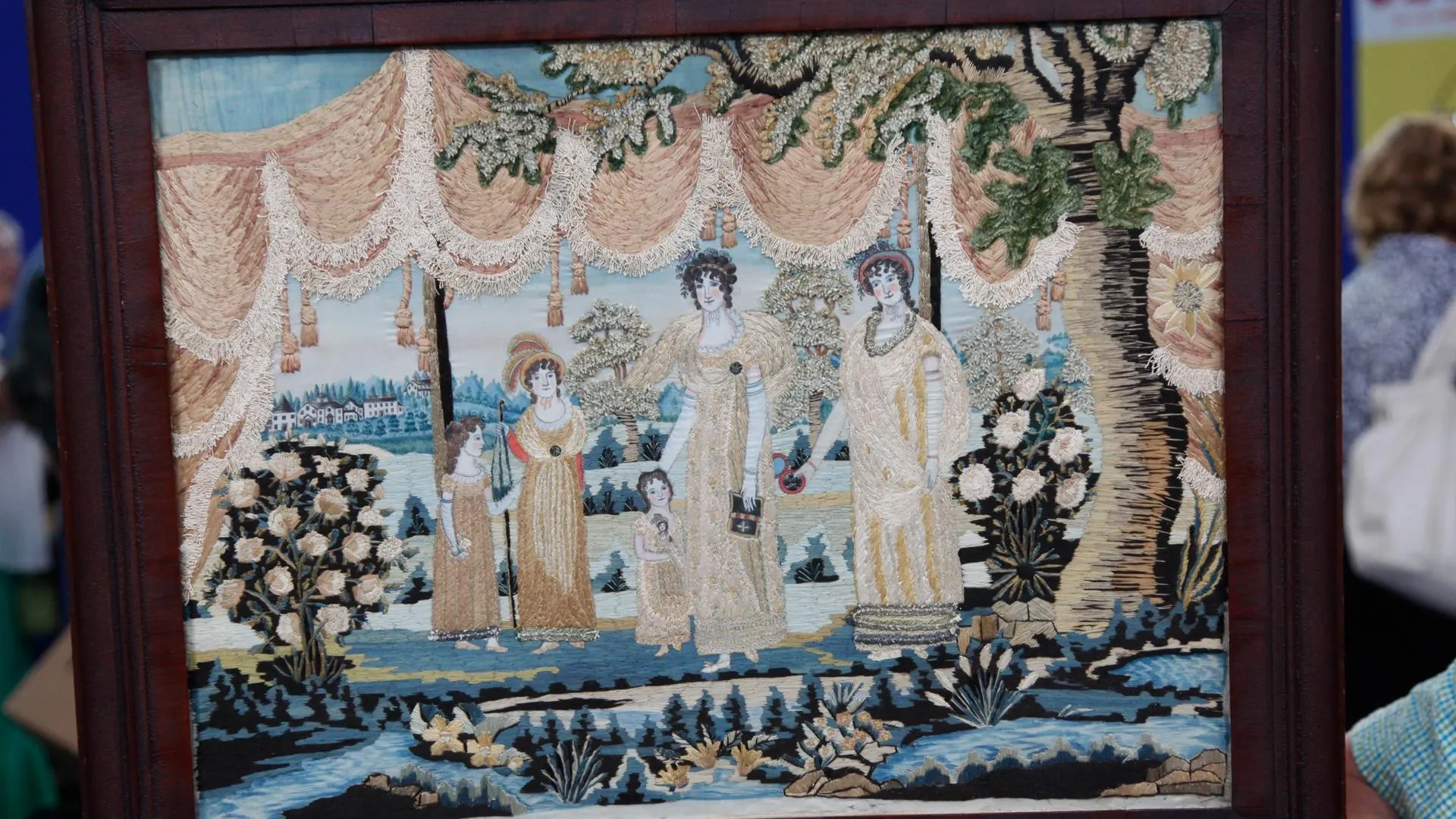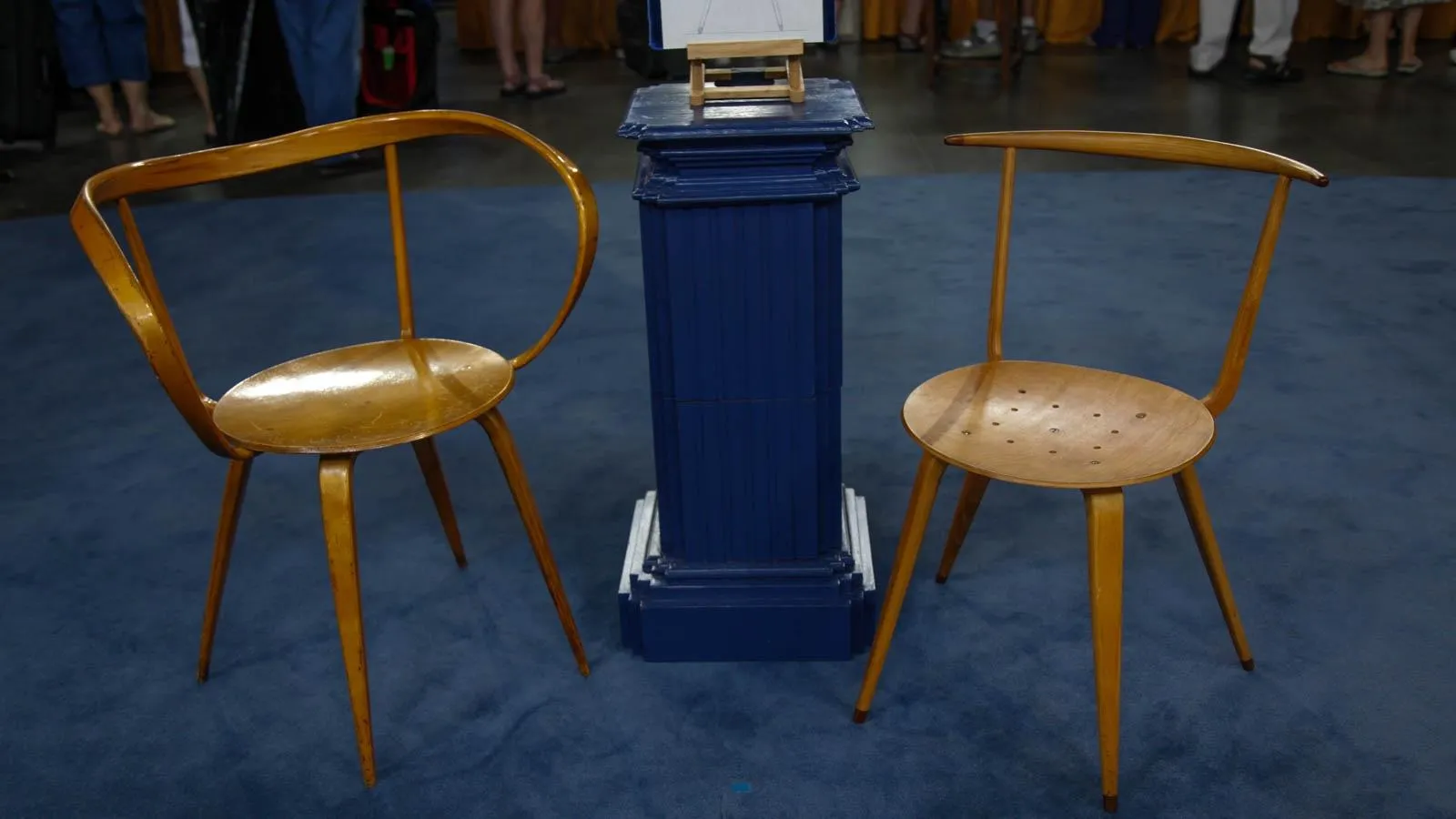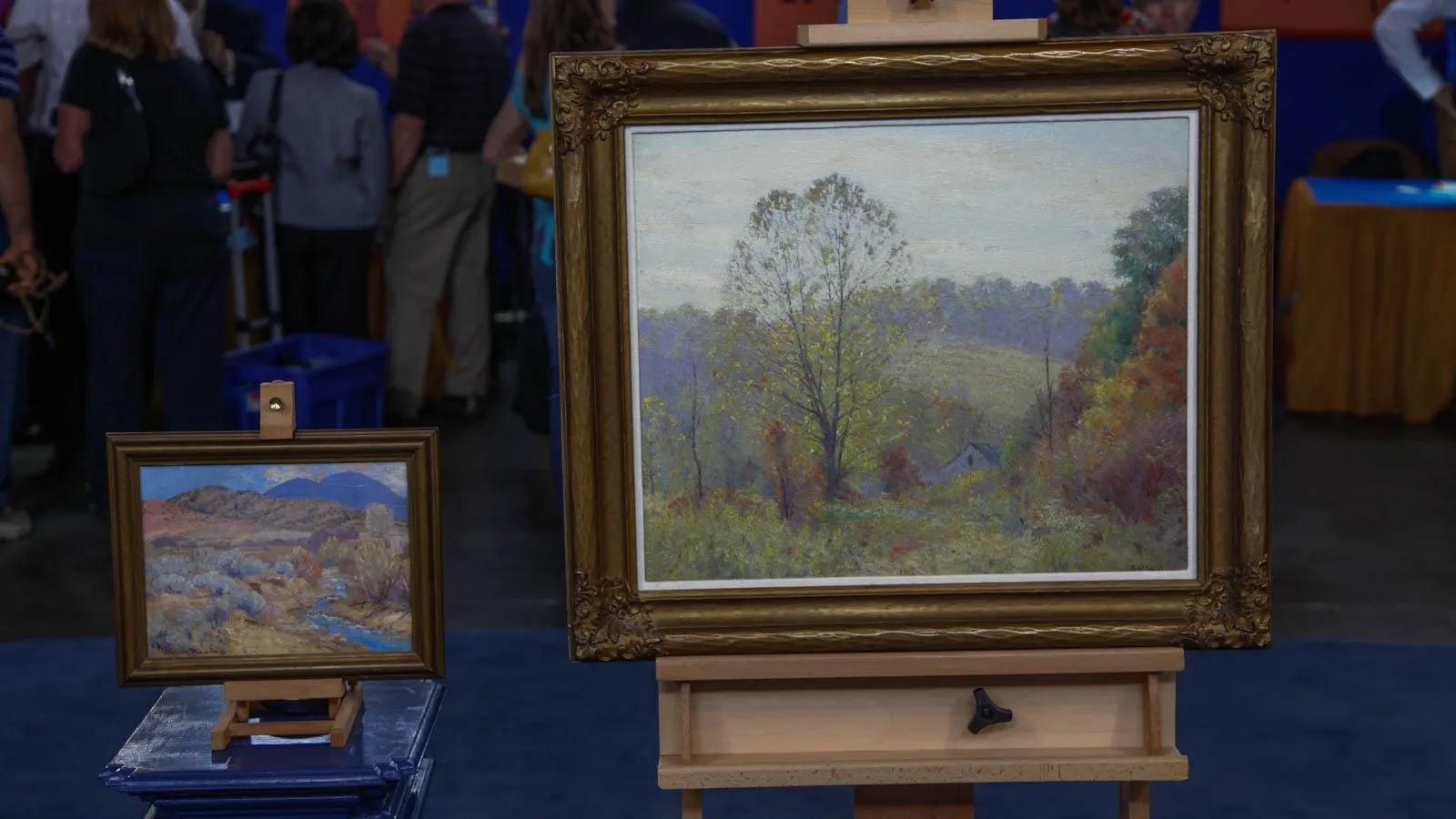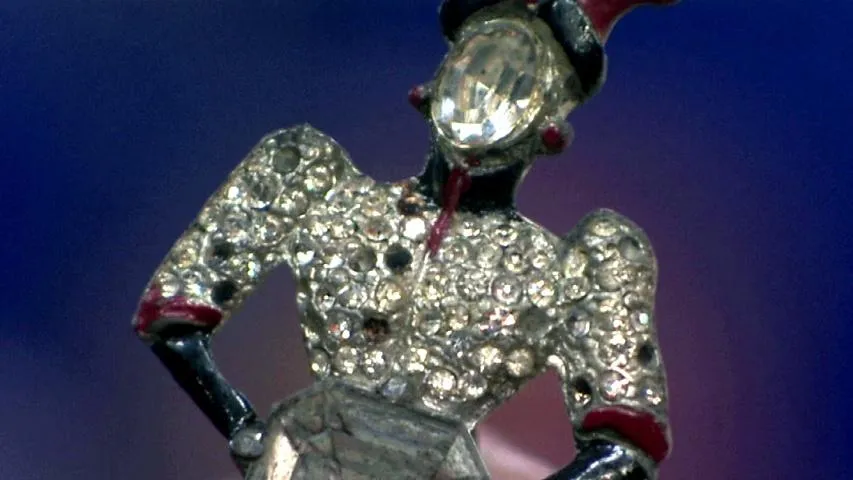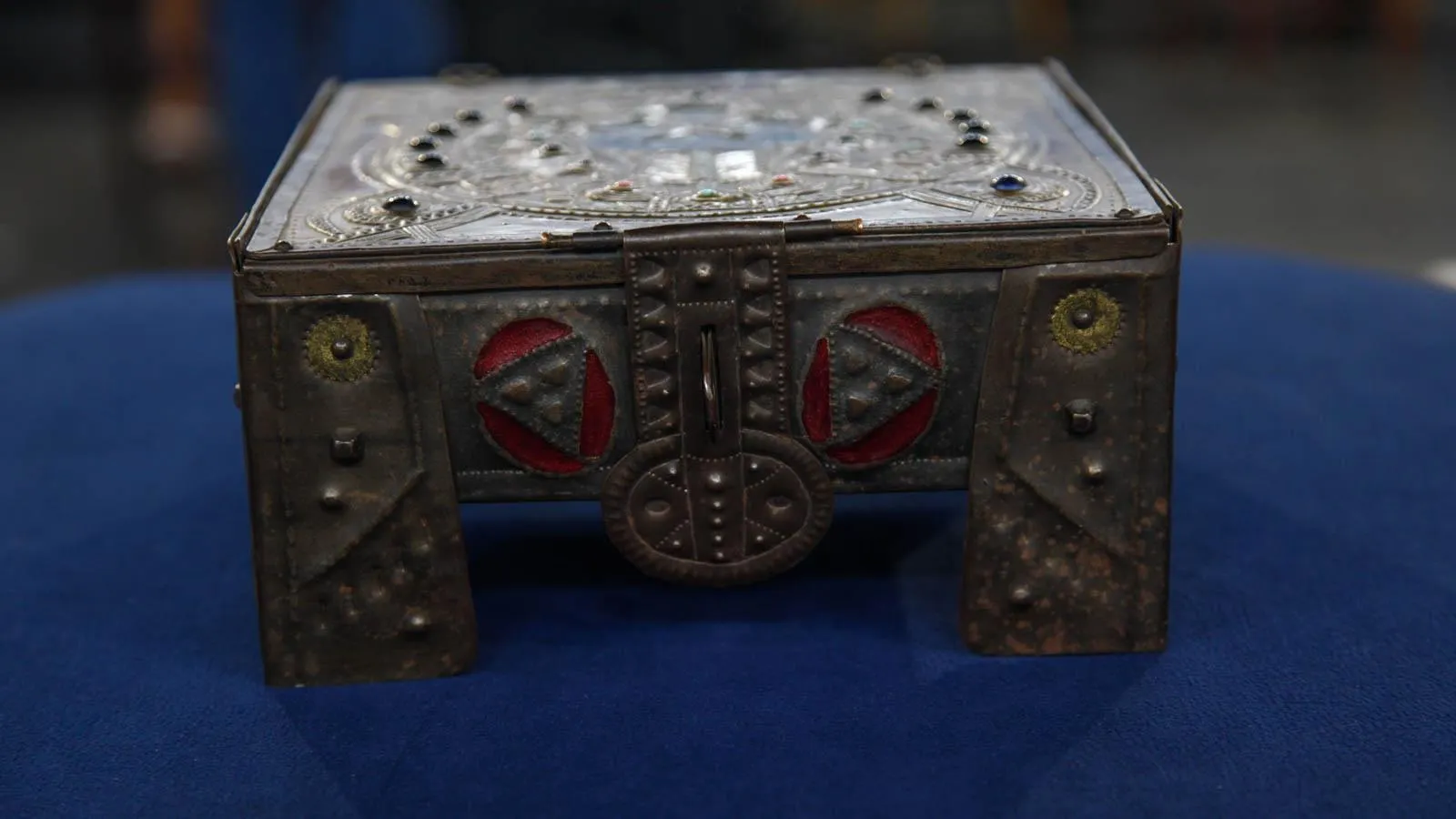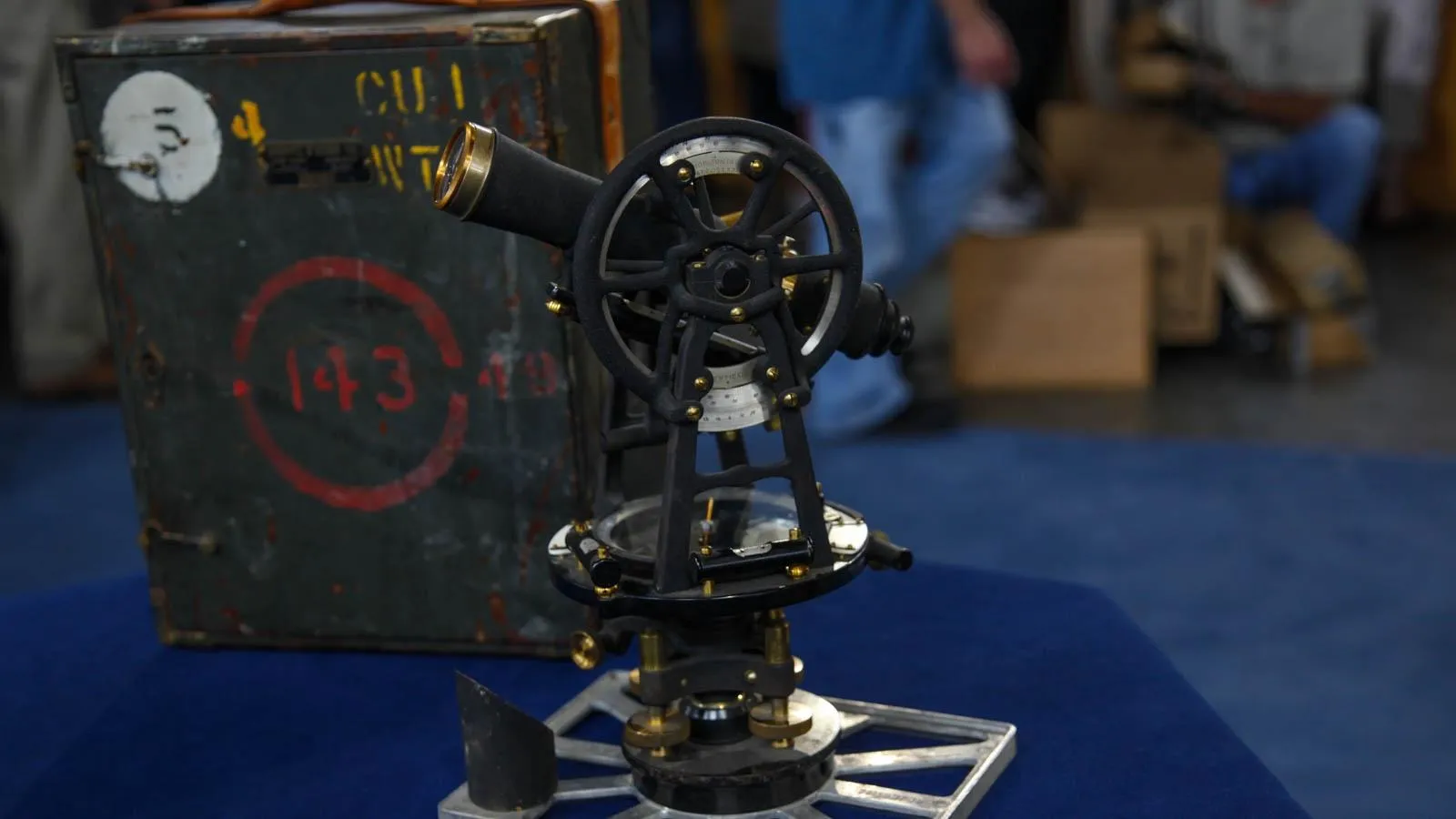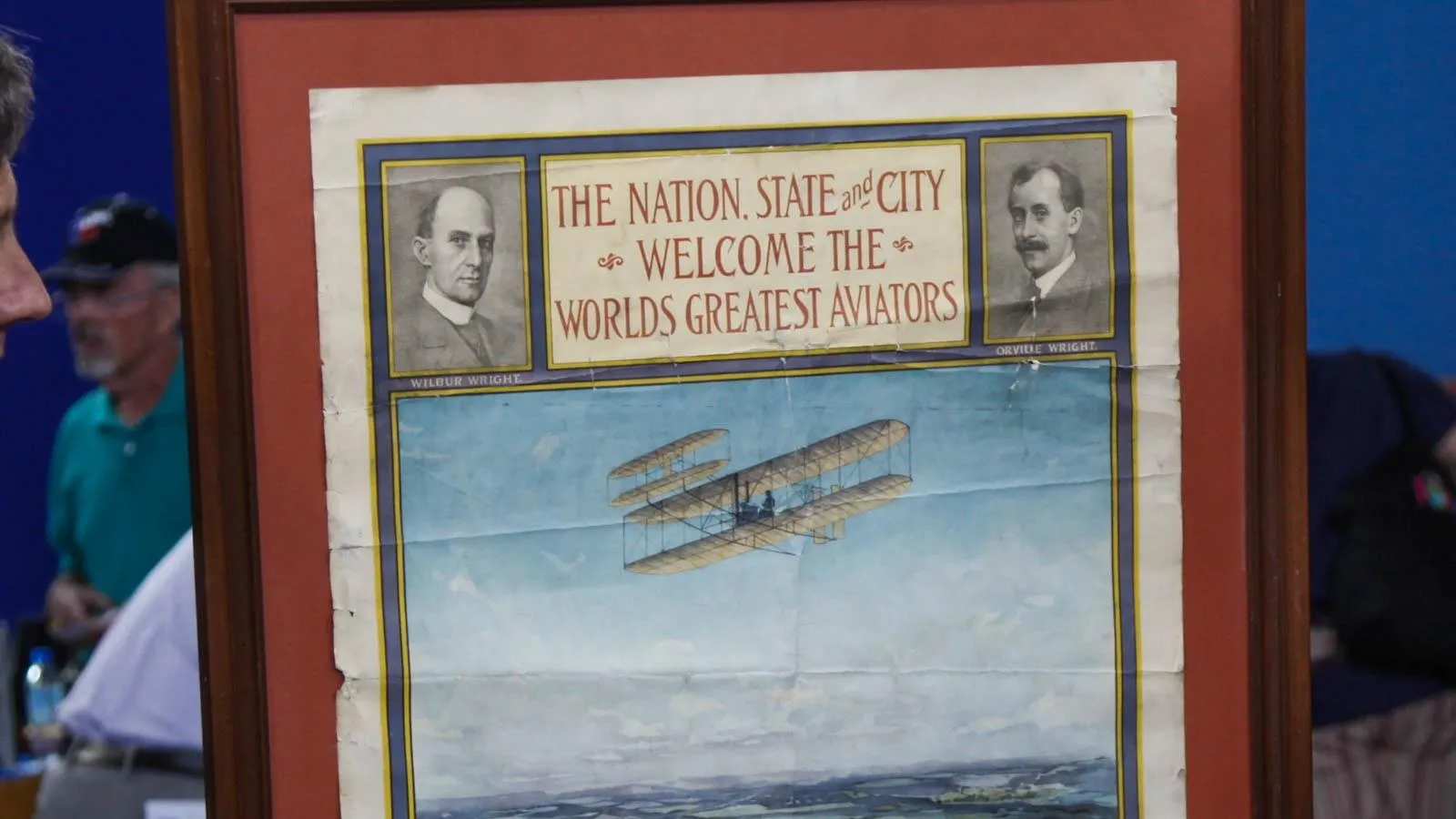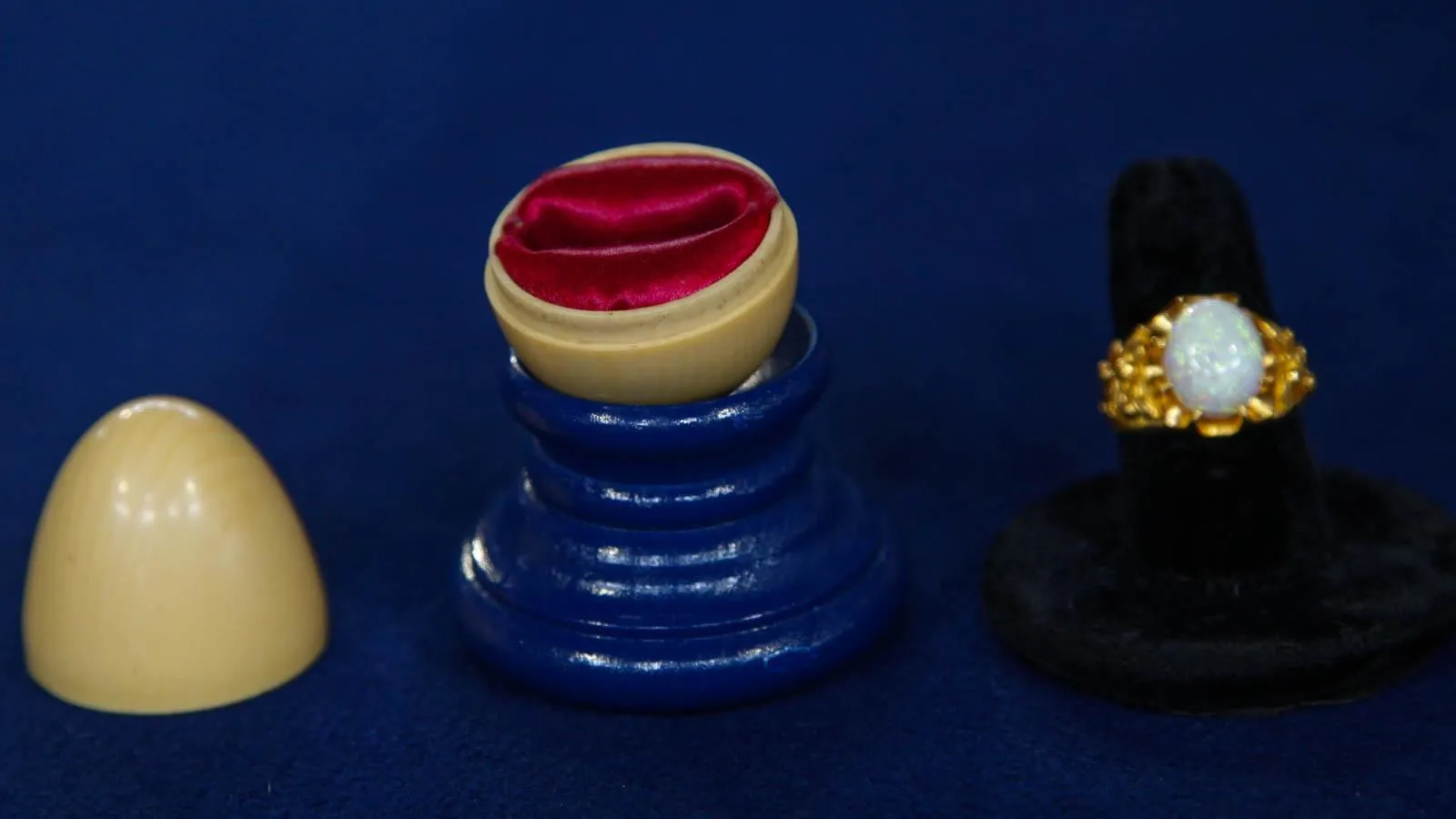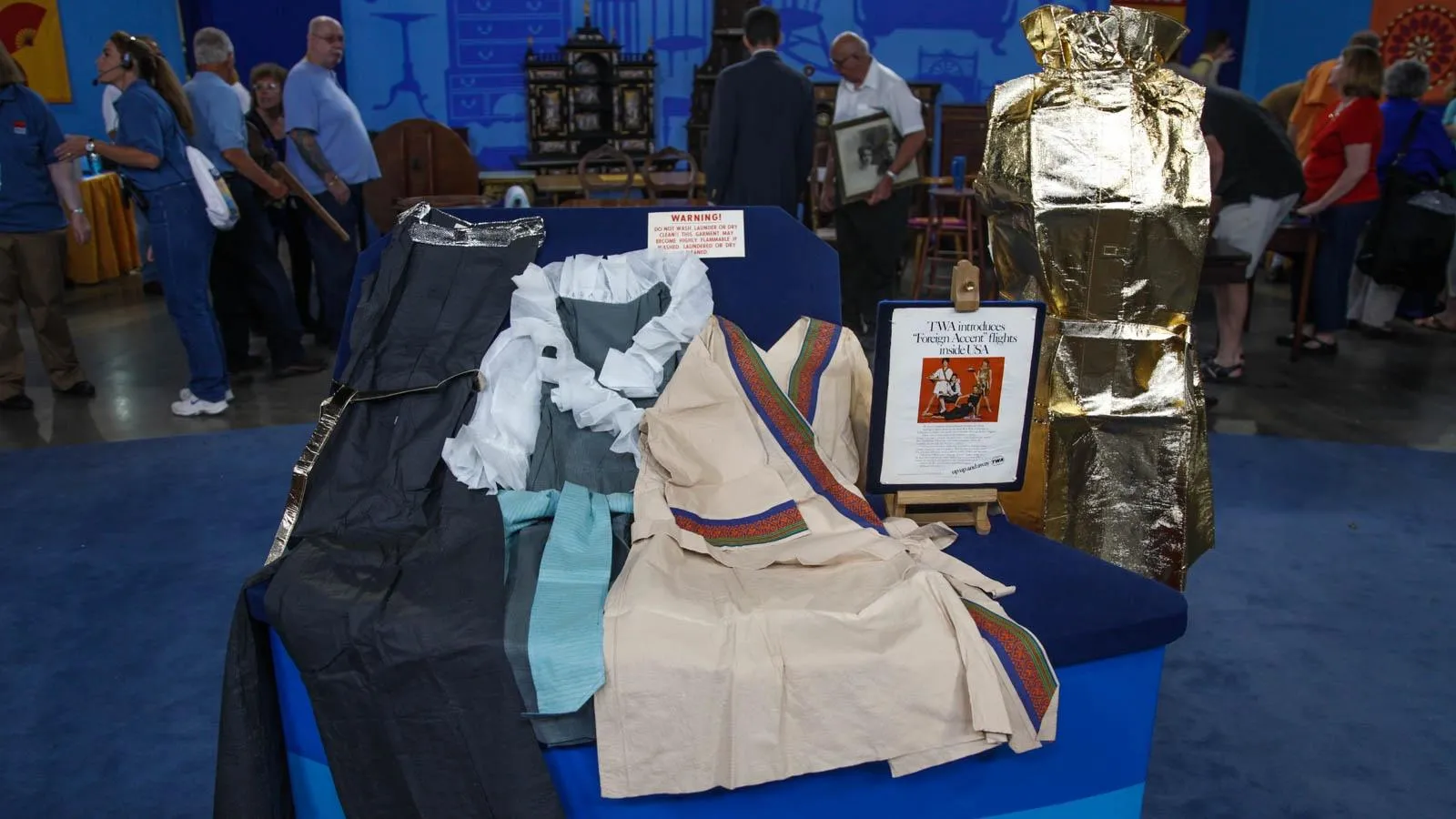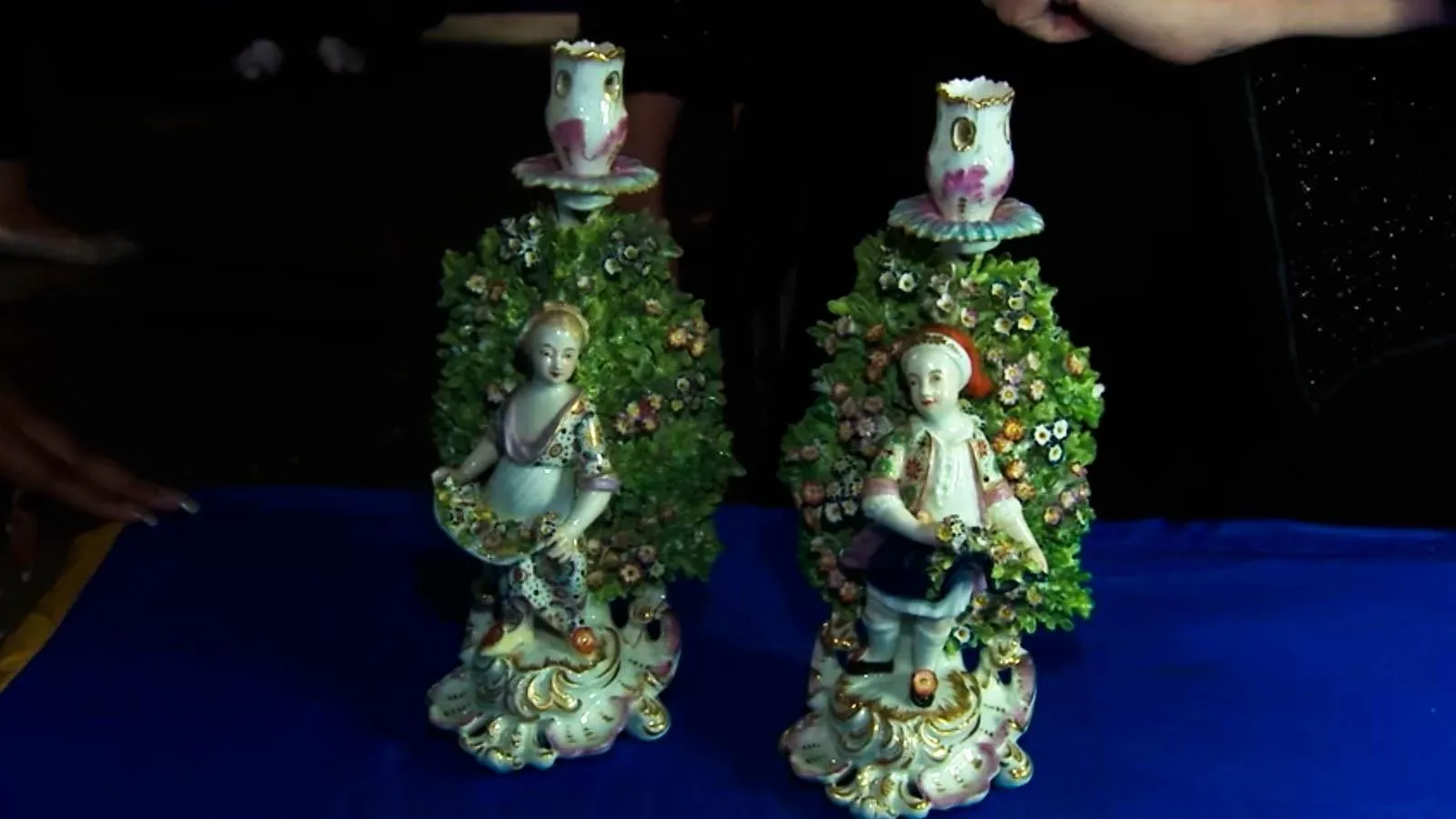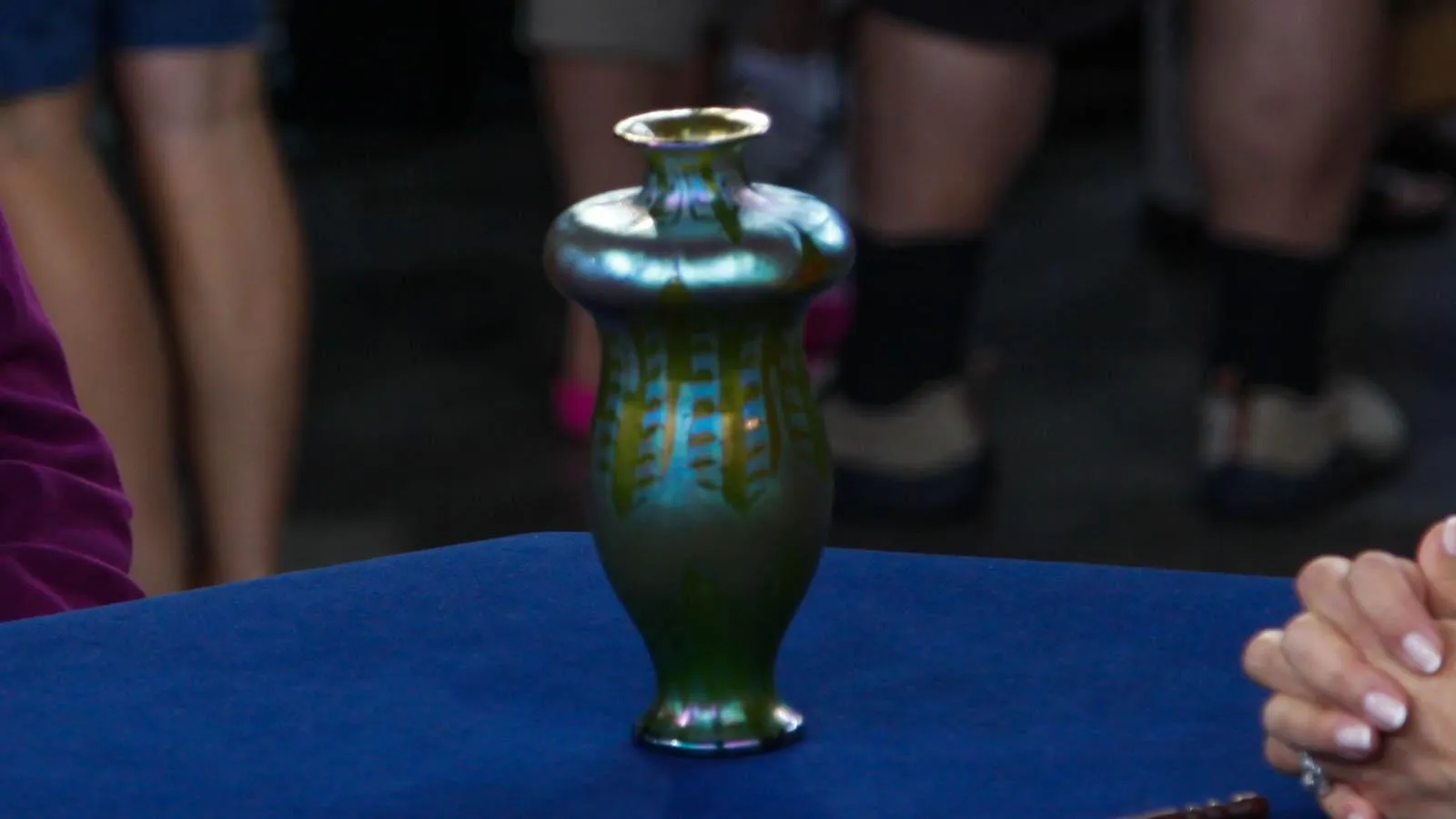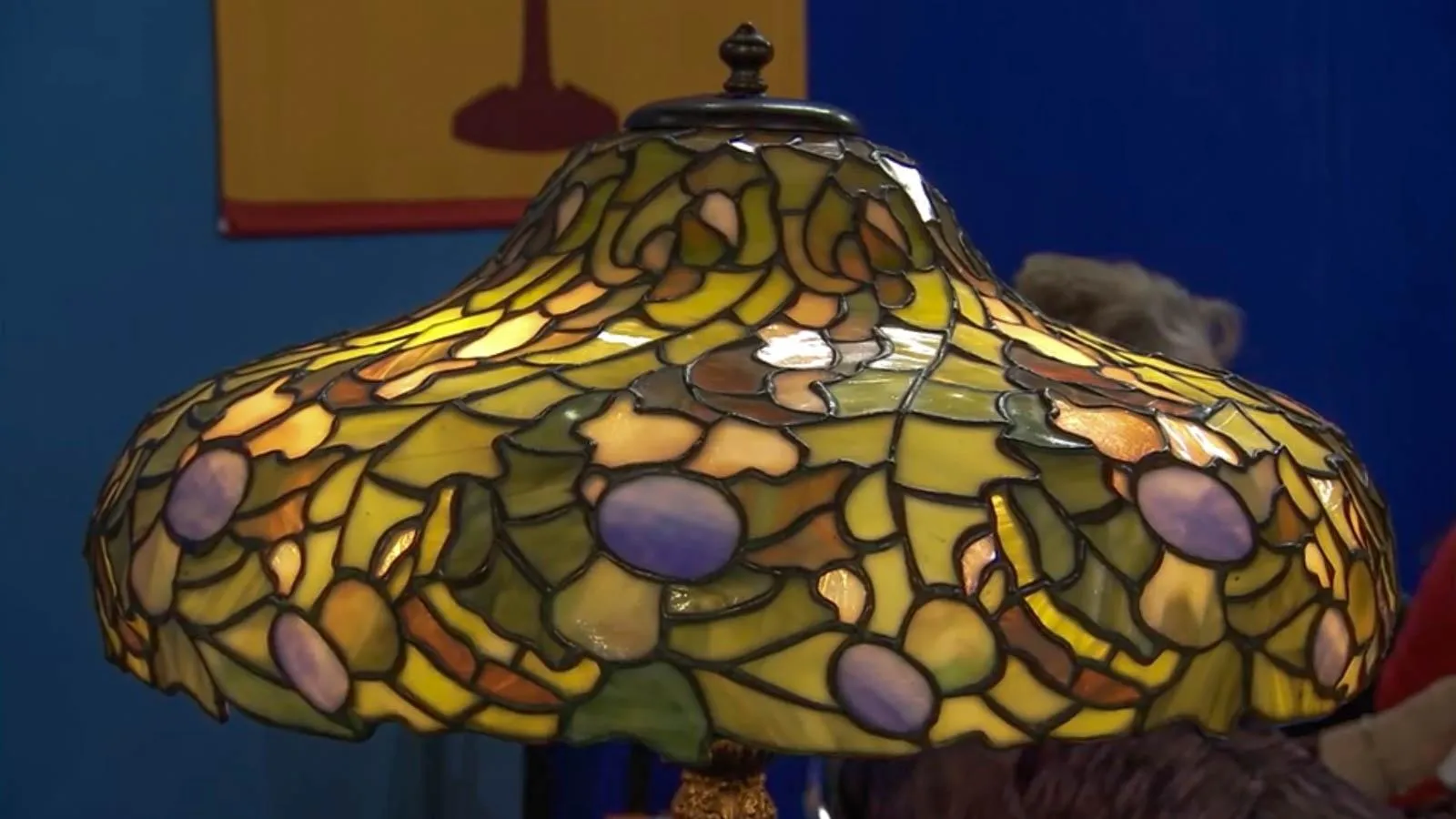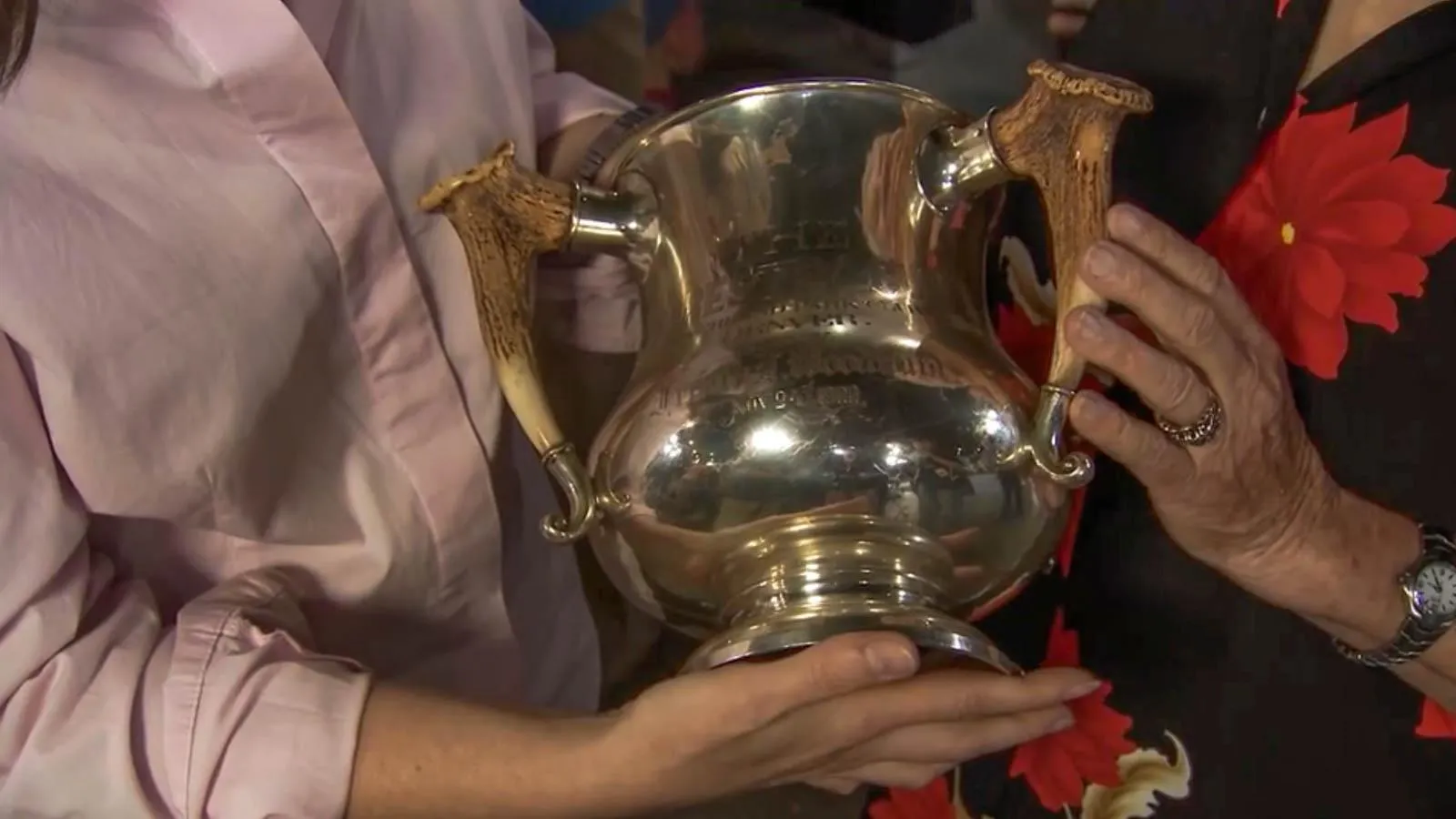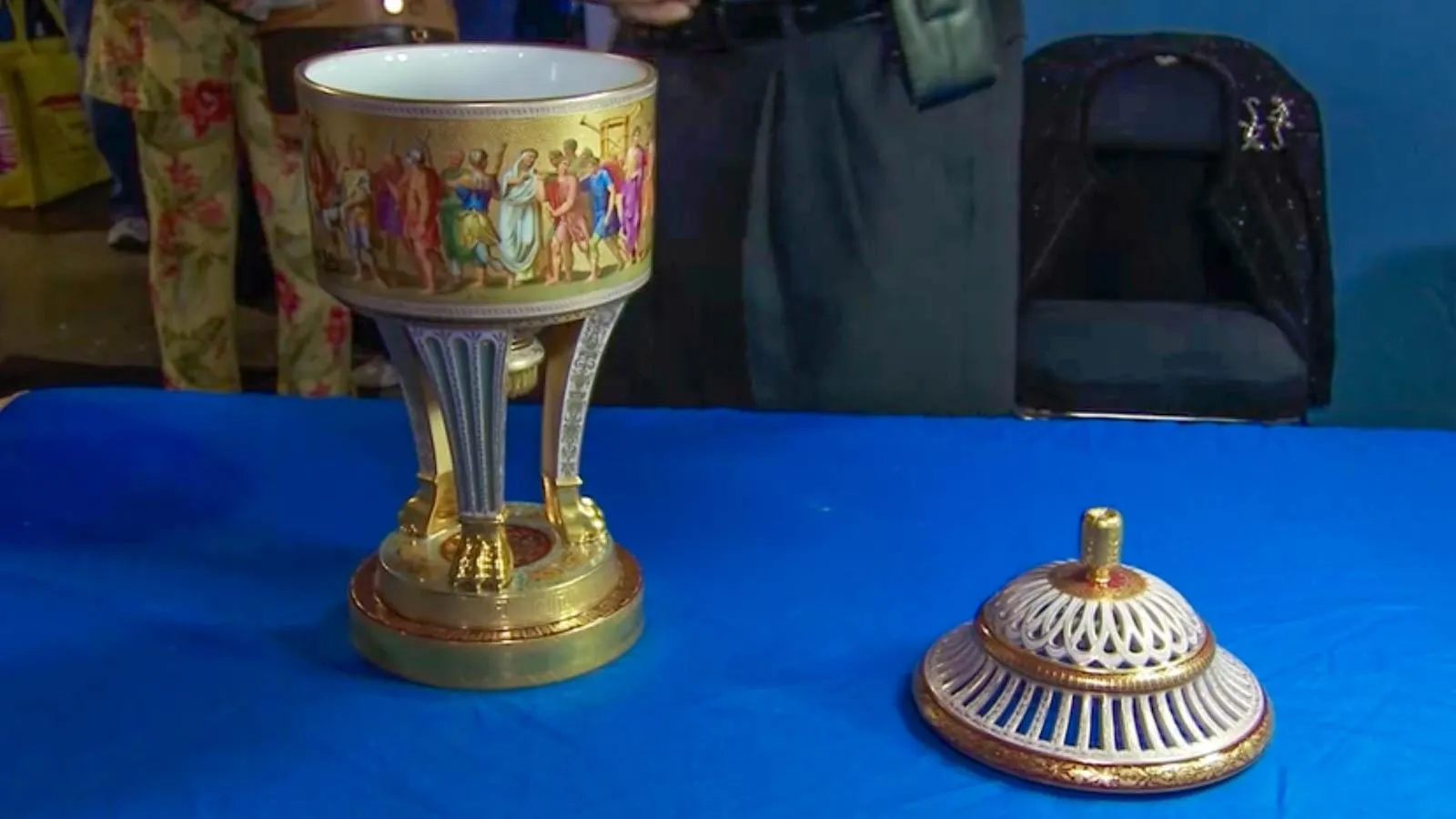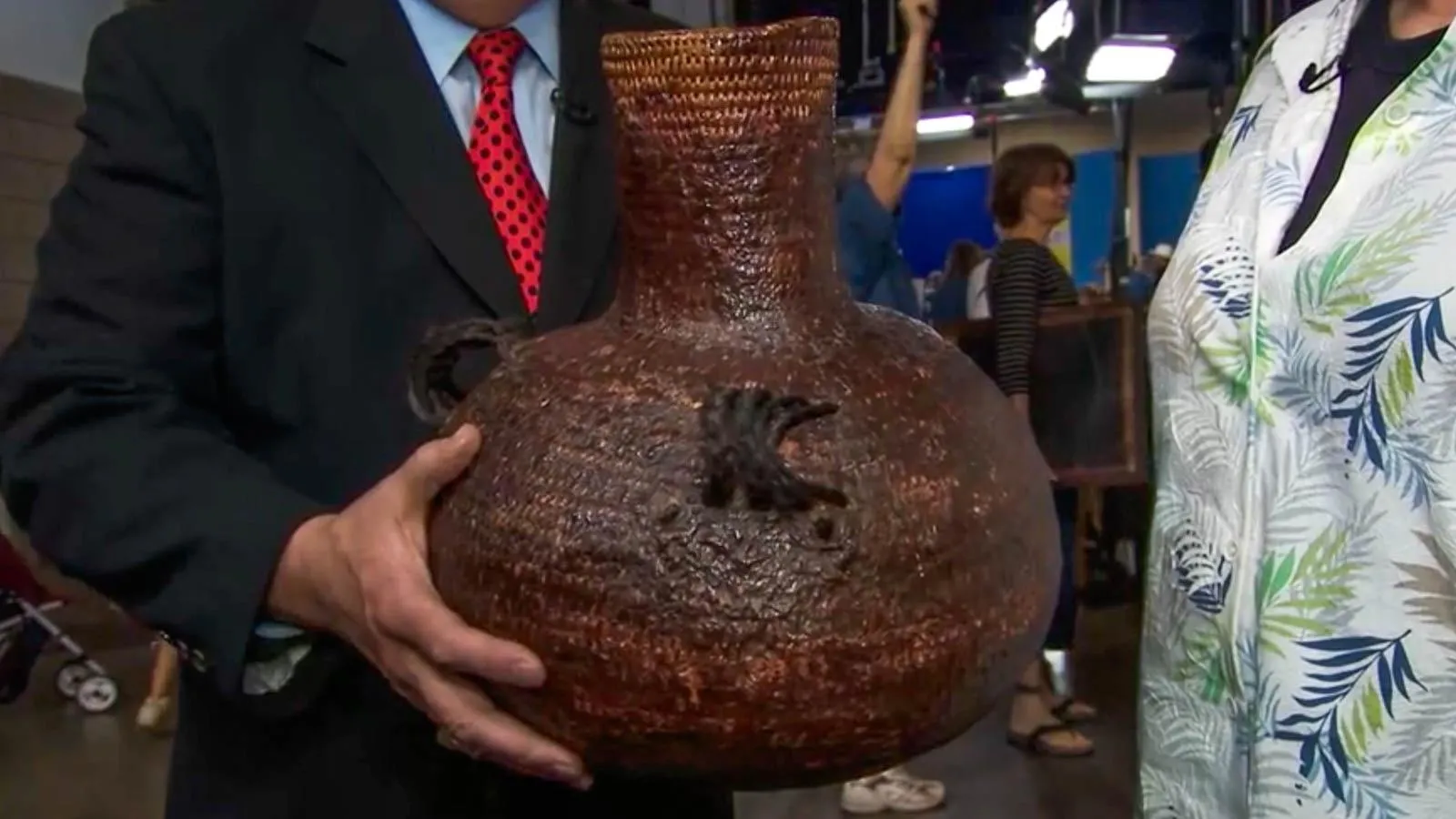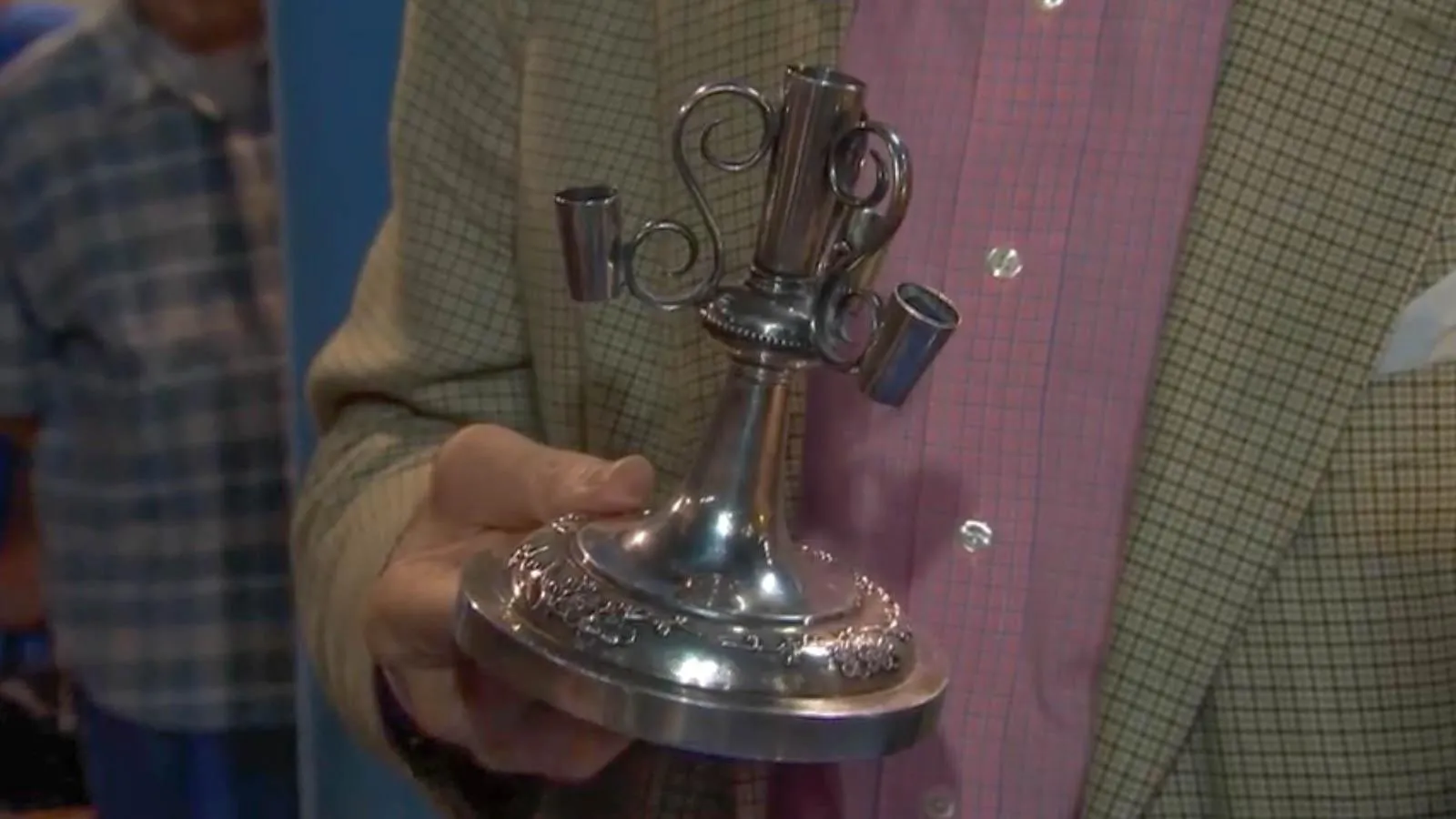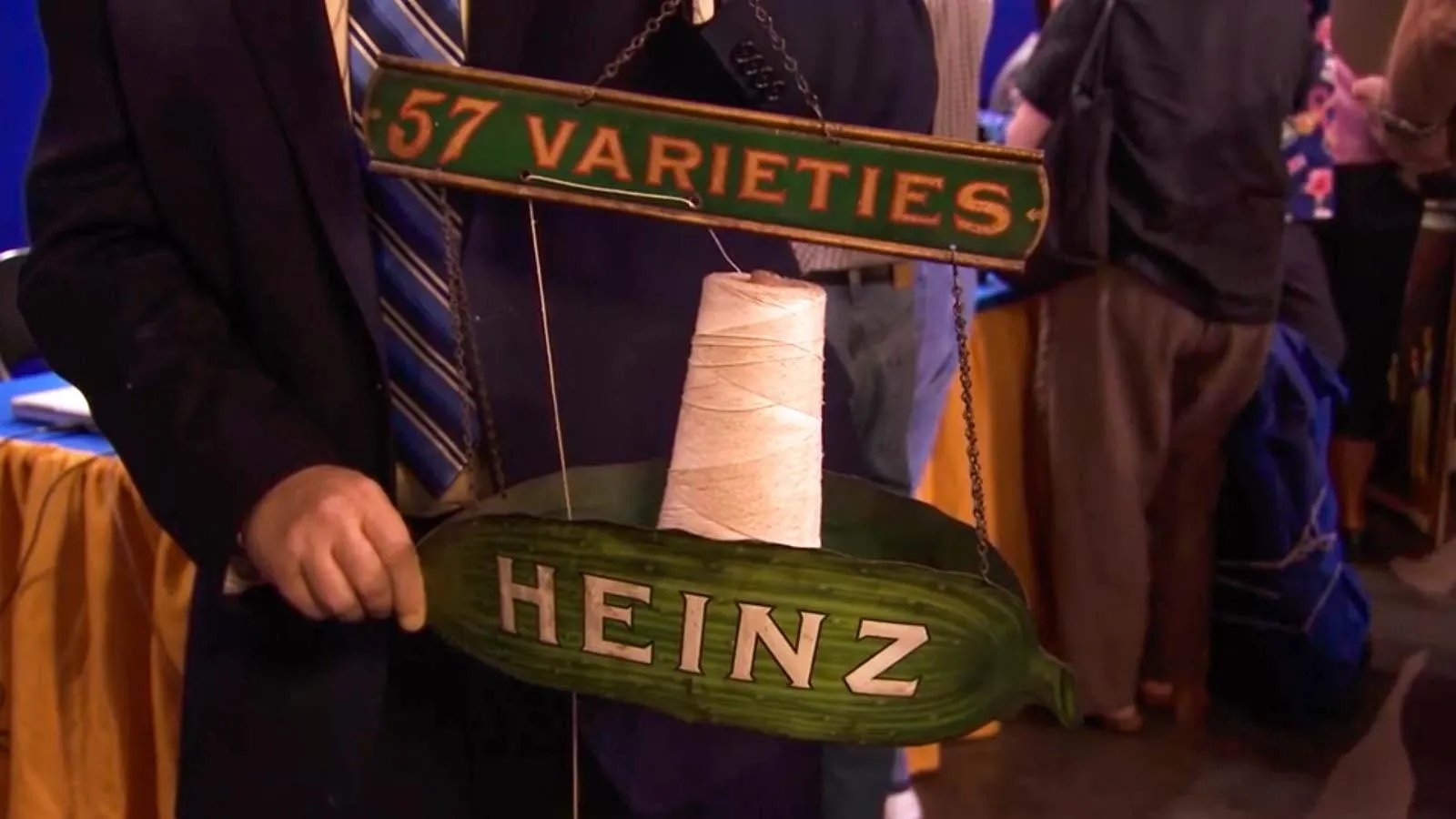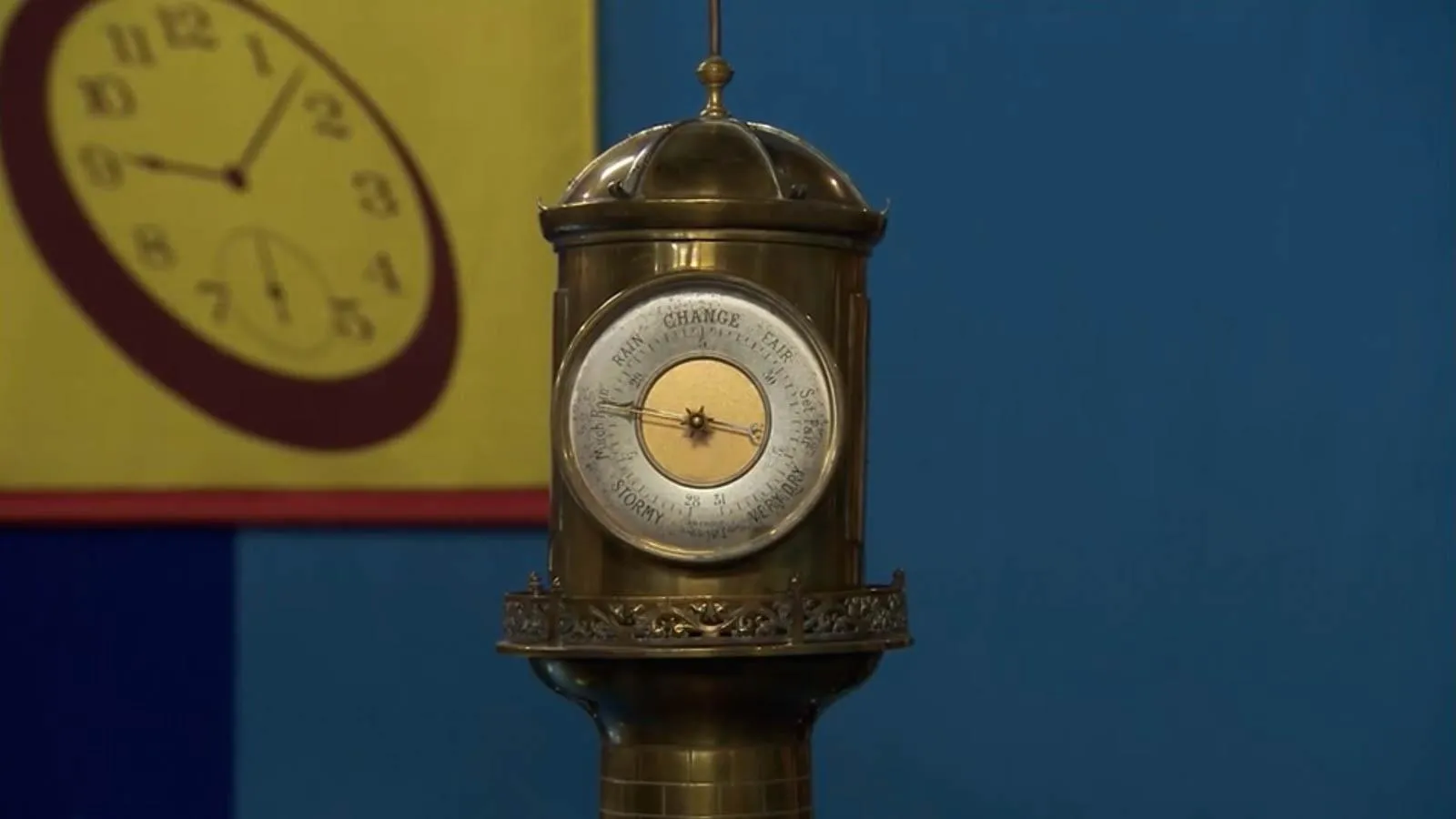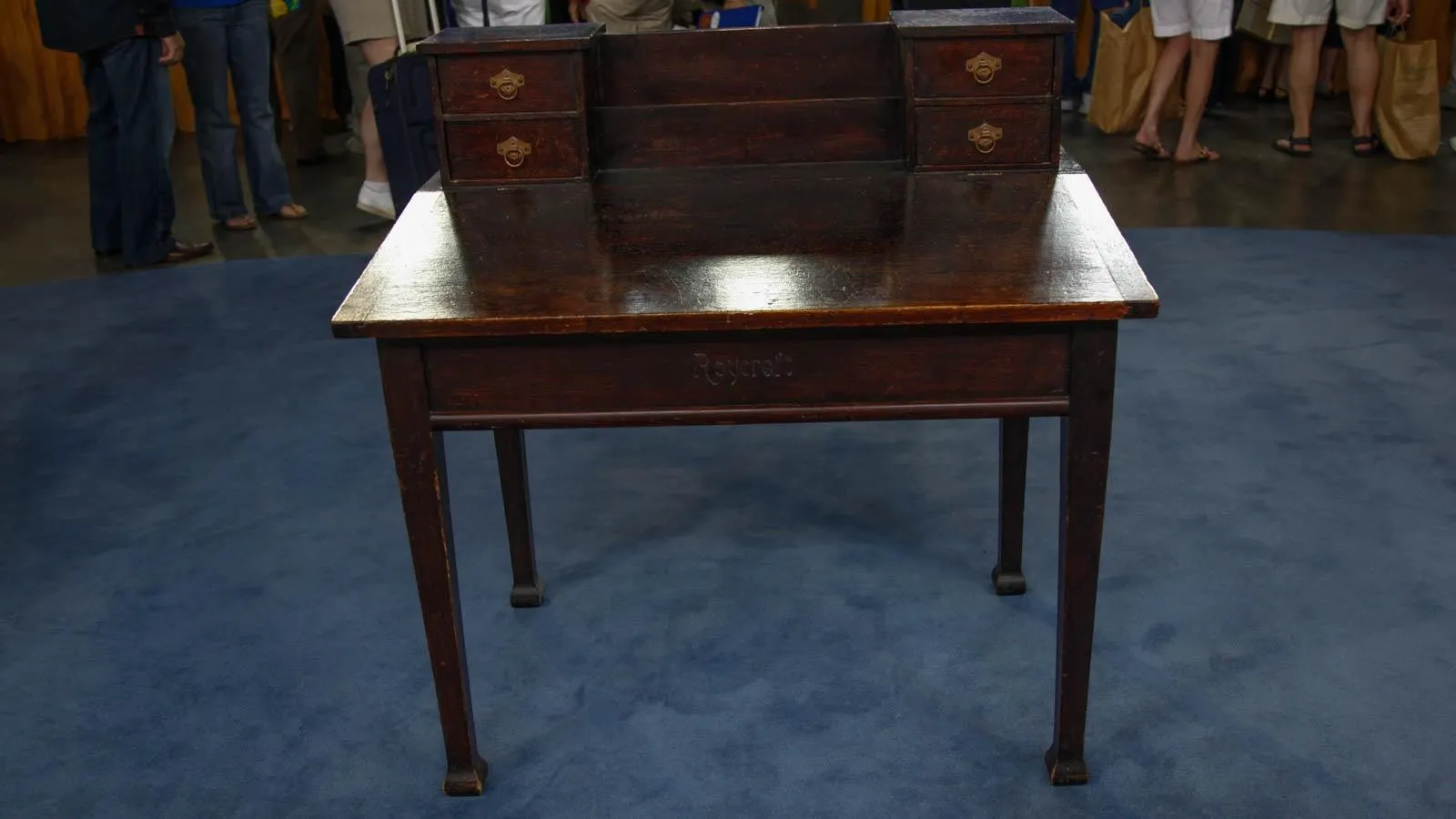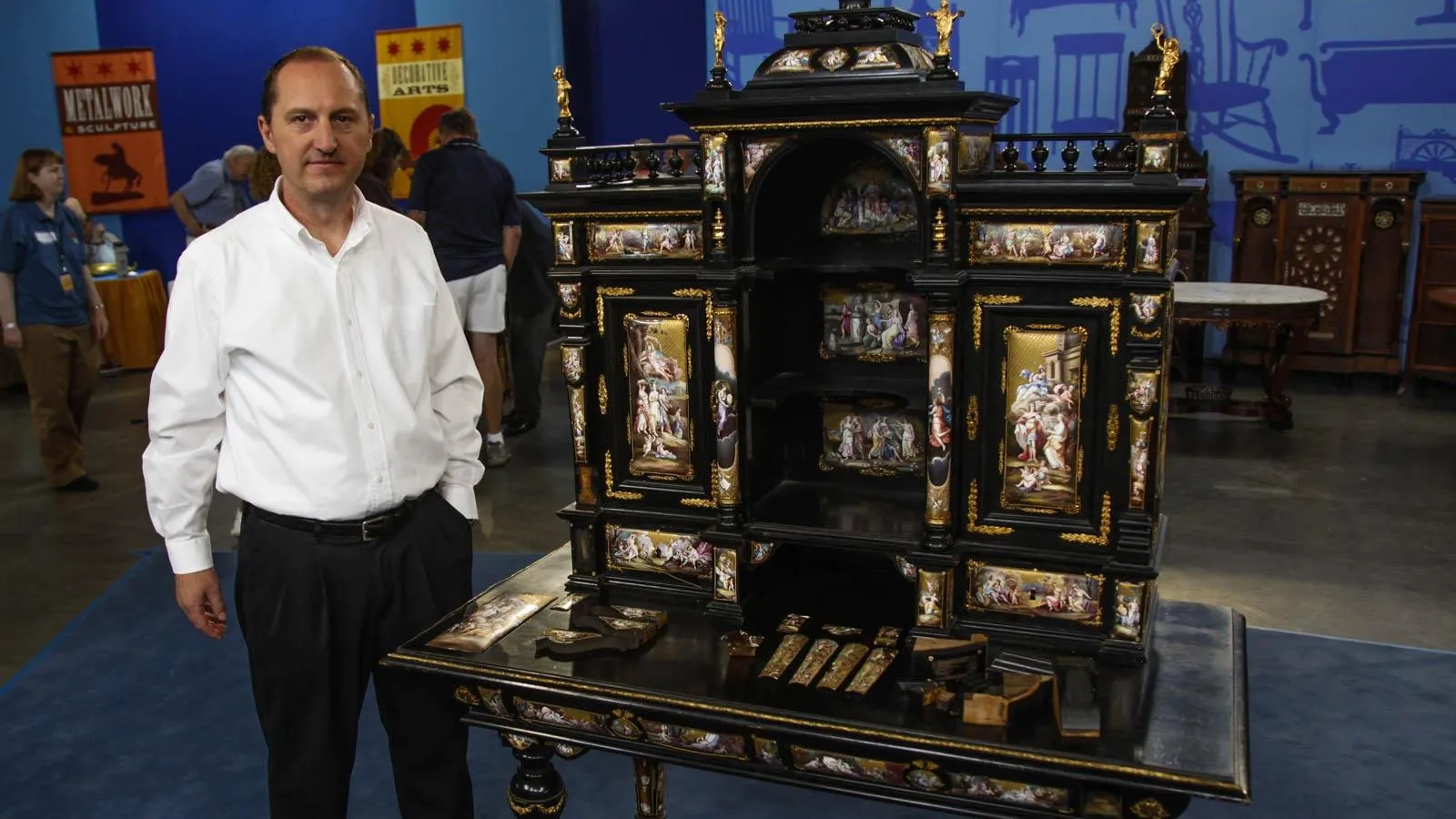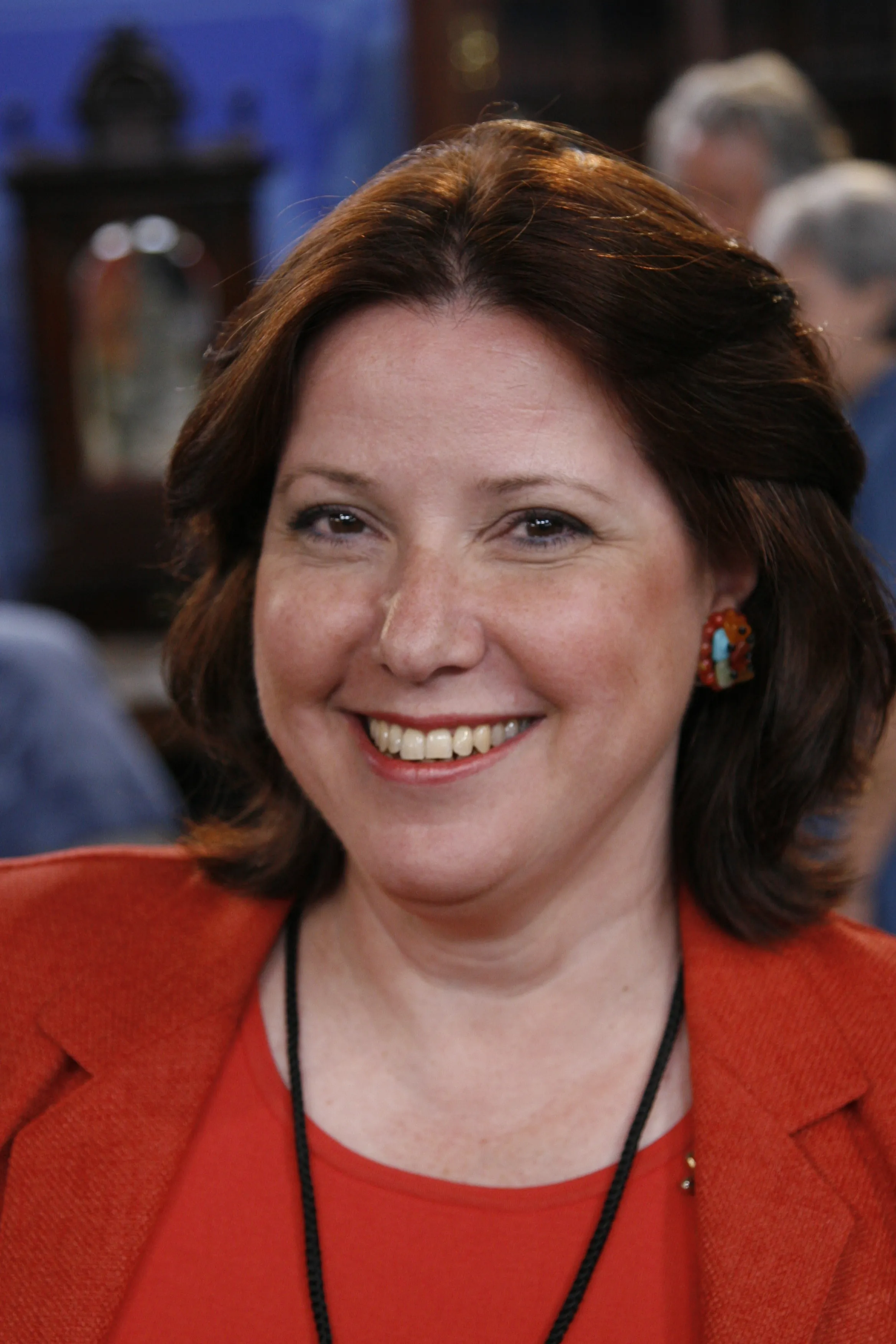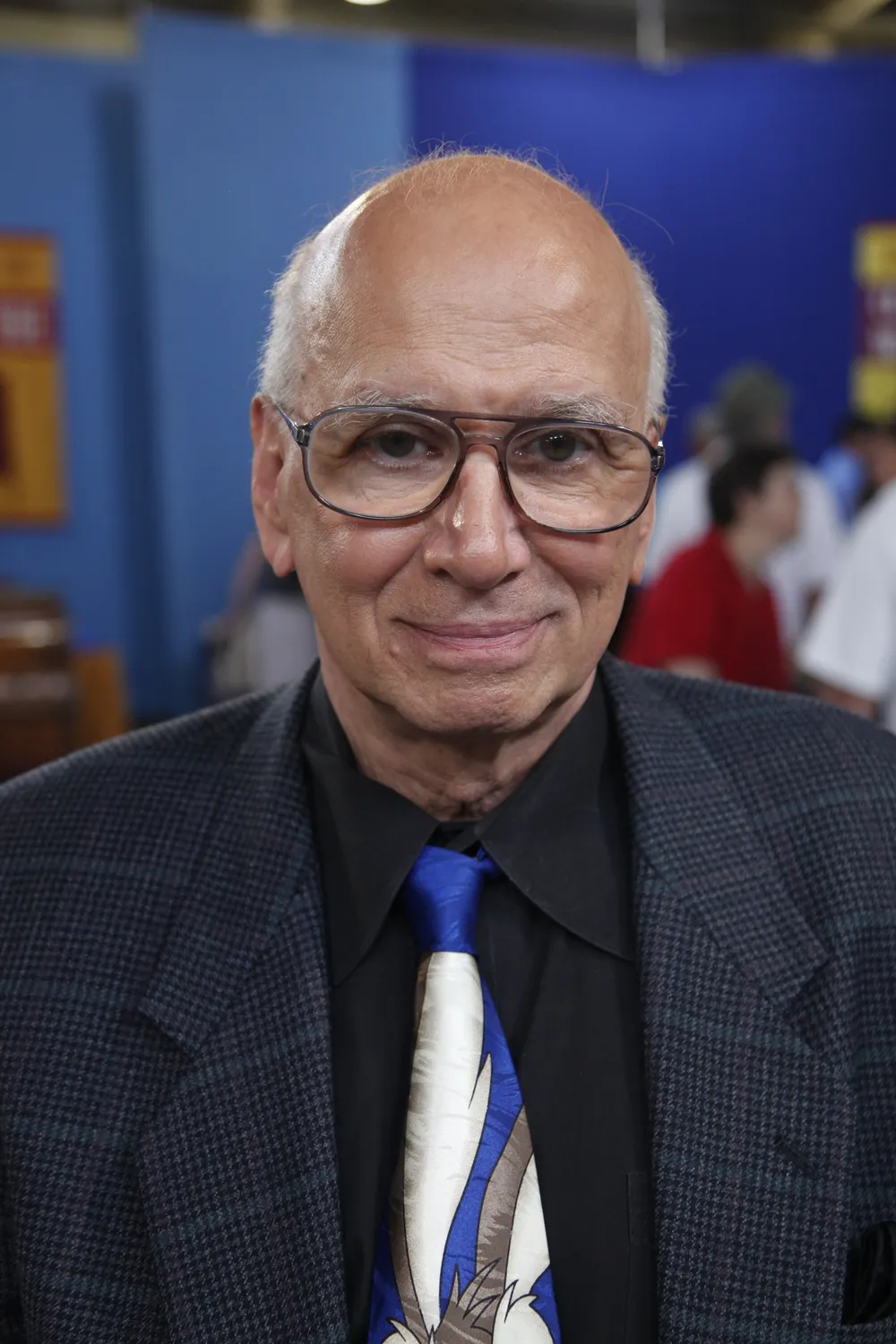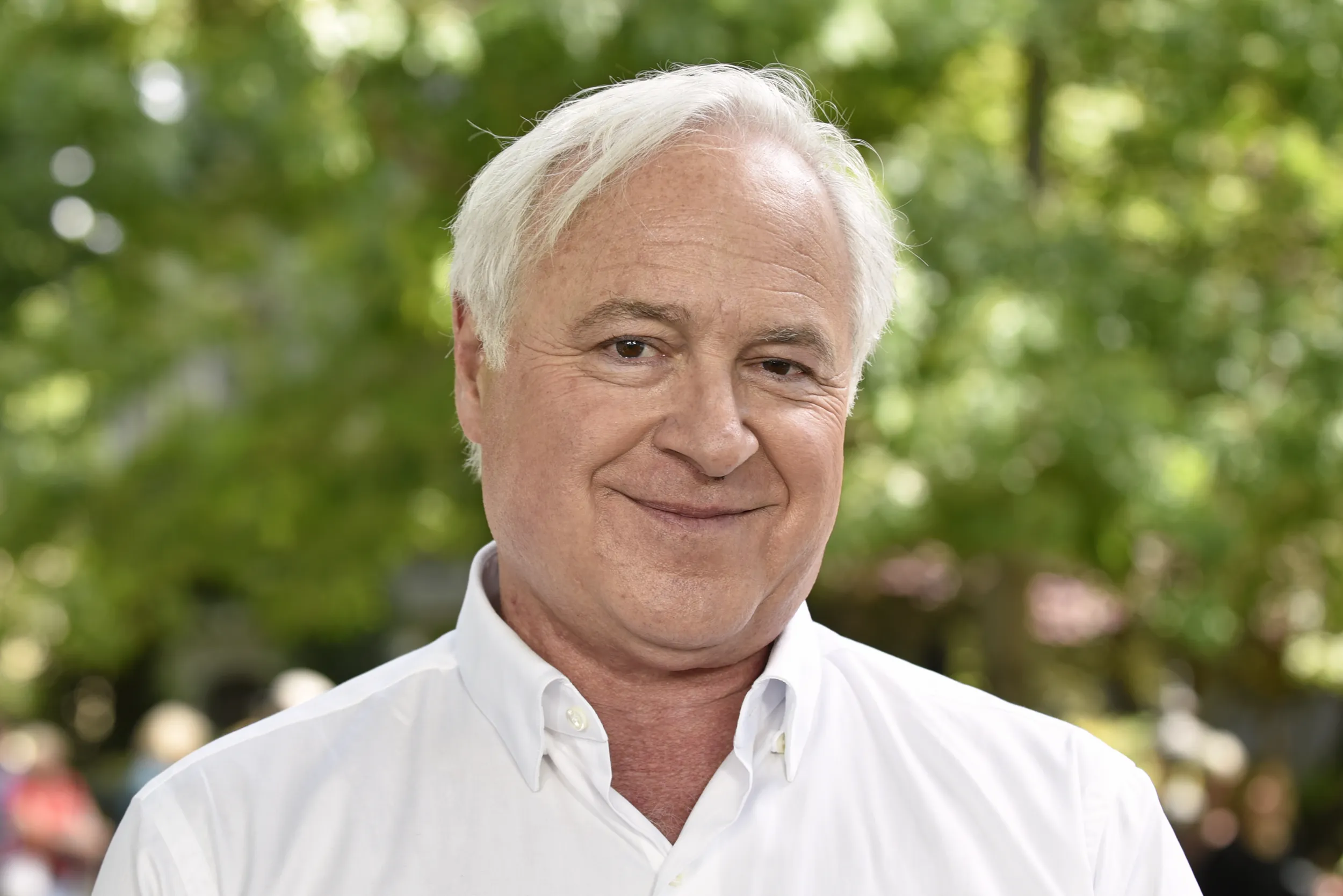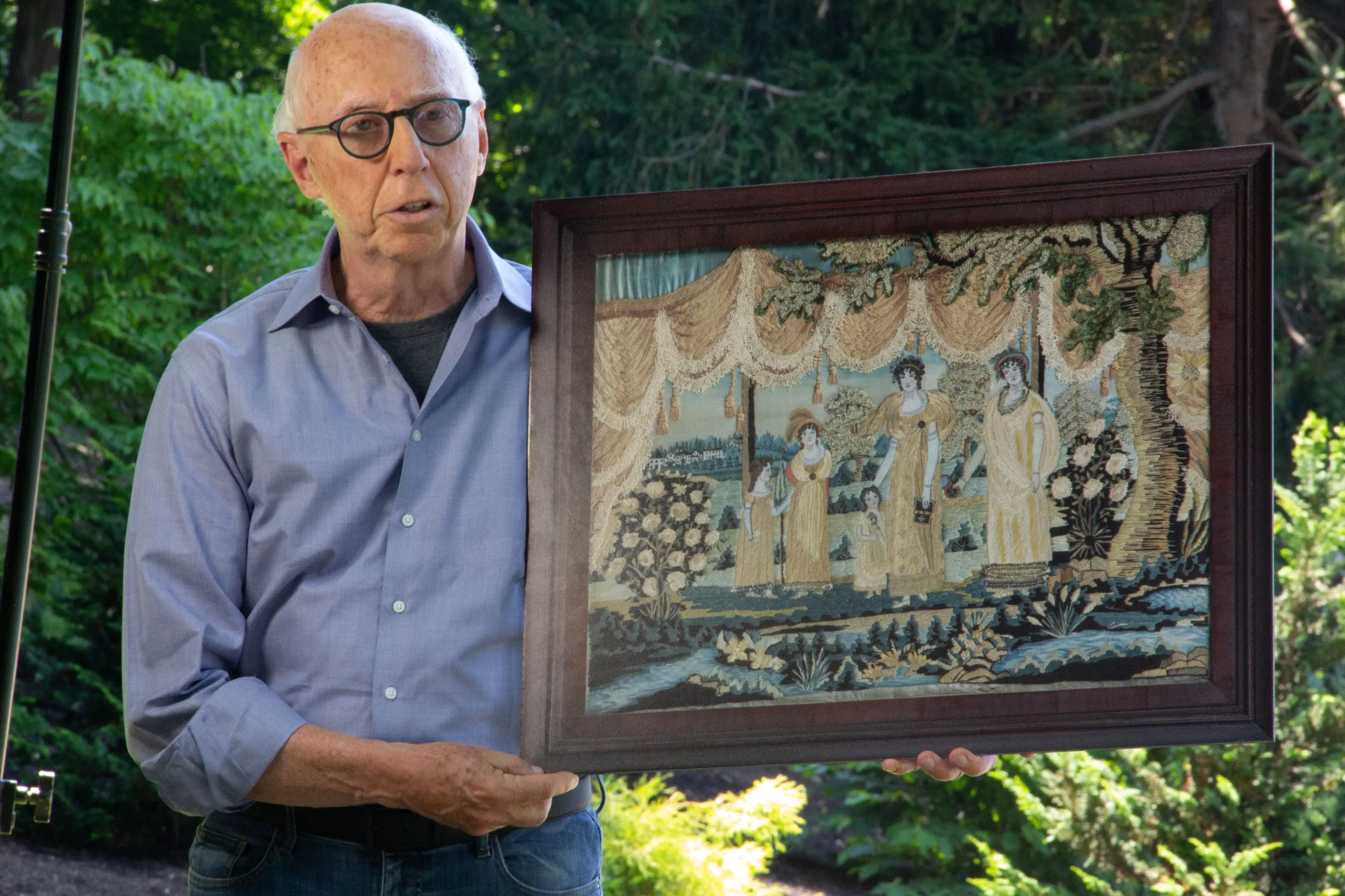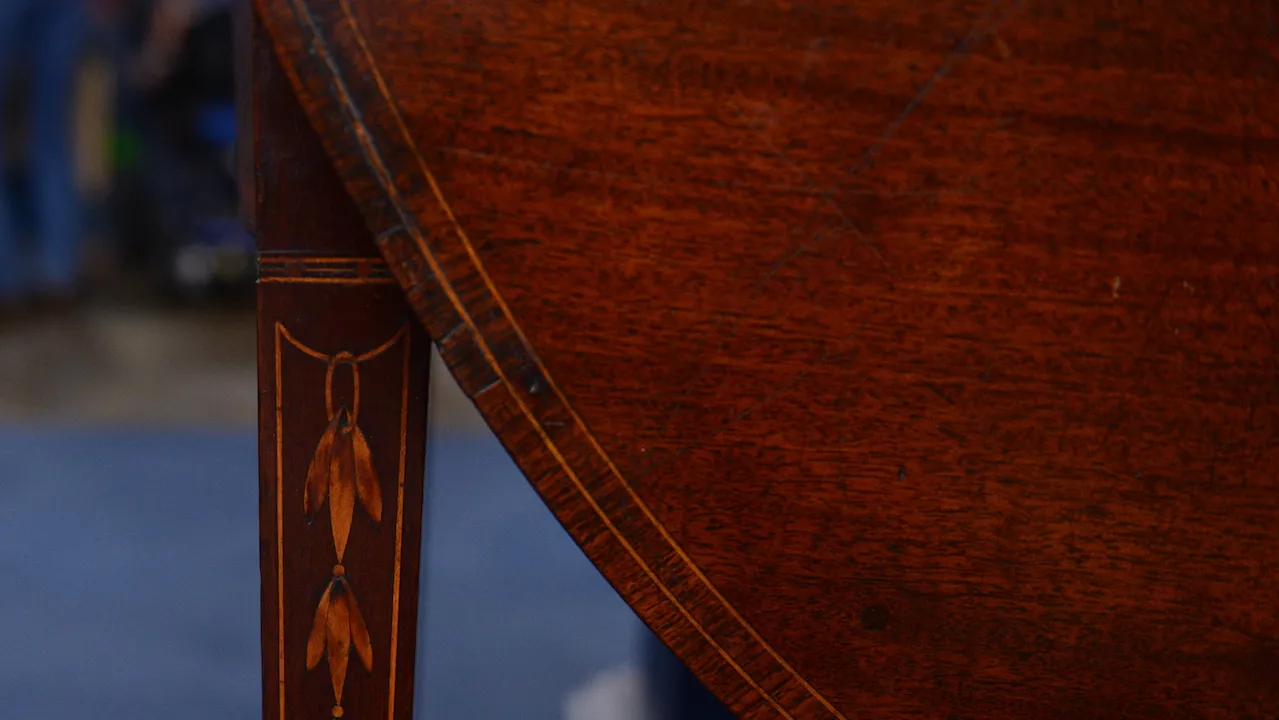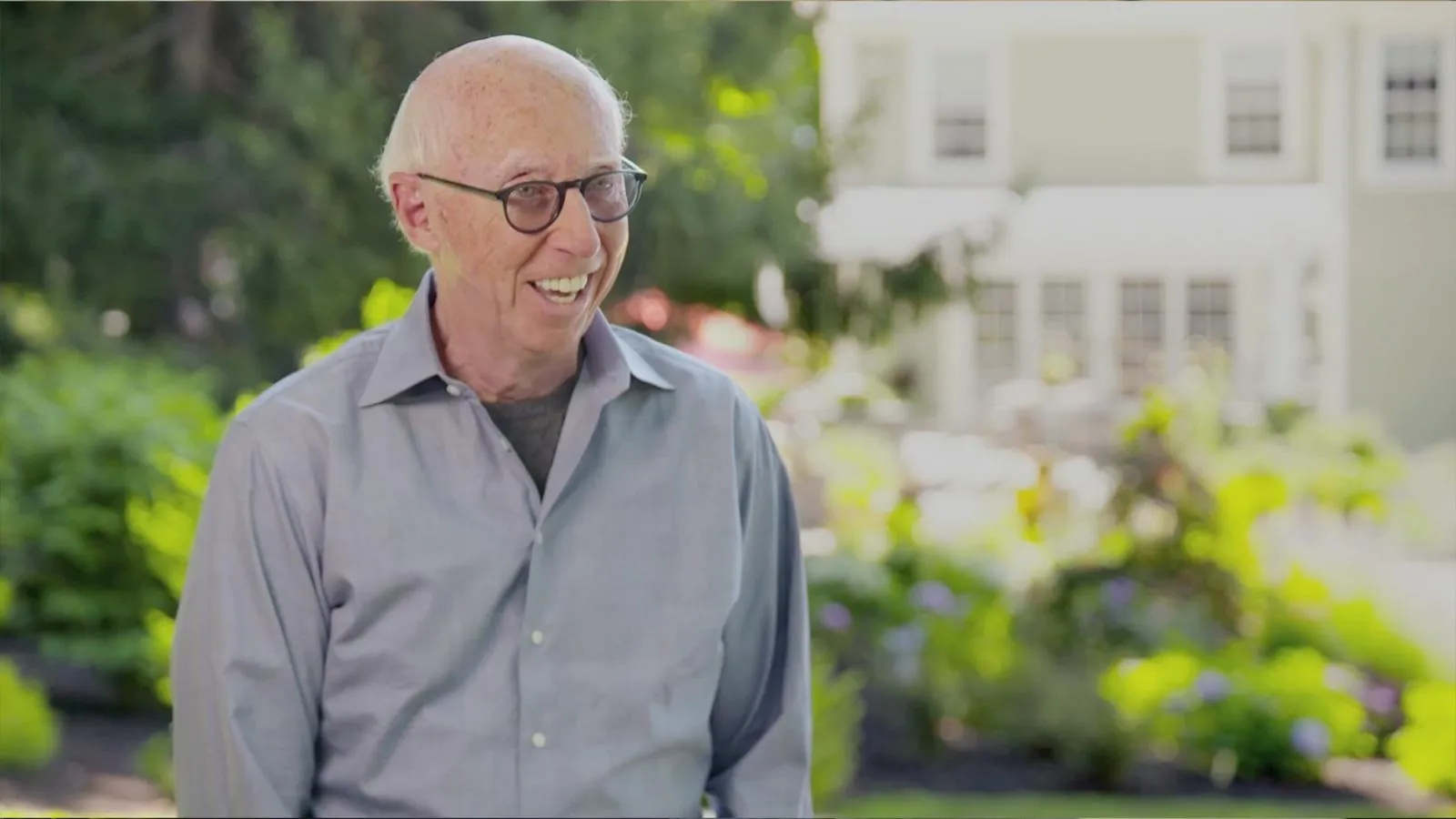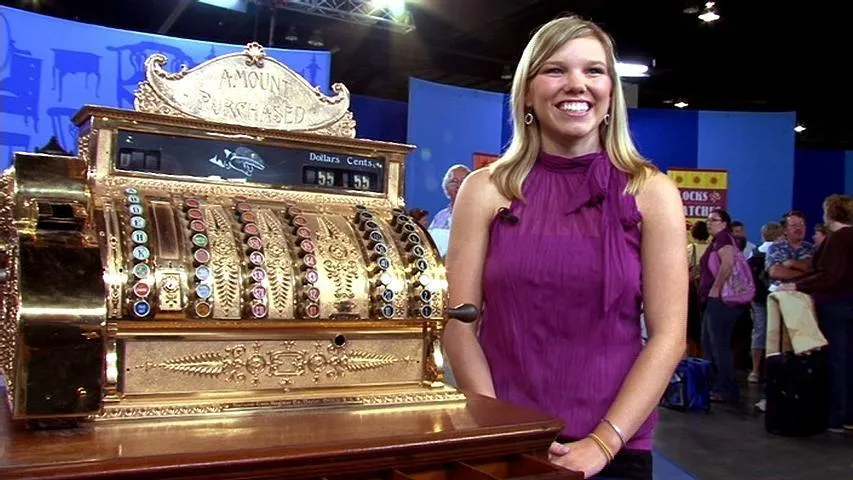GUEST: I brought two chairs that were designed by my father, John Pyle, when he worked for George Nelson in the 1950s in the design studios in New York City. He designed these, um, chairs, he designed also the, um, steel frame furniture line...
APPRAISER: Okay.
GUEST: and other types of furniture for George Nelson.
APPRAISER: A lot of people don't-don't know that George Nelson was an architect and that he had people working for him like your dad.
GUEST: Yes. And what happened was the George Nelson name went with the furniture...
APPRAISER: Right.
GUEST: but the designers themselves rarely got individual credit.
APPRAISER: Well, what you have there, and I know you know the name of it, because you've grown up with this chair, right?
GUEST: Yup, yup, these were always in our house growing up.
APPRAISER: Always in your house. The chair you're next to is called a pretzel chair. And that name only started in the 1980s.
GUEST: Right.
APPRAISER: In 1952, when your dad designed both of these chairs, it was called a laminated chair. And it took 30-some years to call it the pretzel chair. Now, the crest rail is bent, and it comes around, and the legs are bent at the top.
GUEST: Right.
APPRAISER: It's made of natural birchwood. And very few of these were made. 1952 he designed it, but they didn't come out until, what?
GUEST: About 1957, I believe.
APPRAISER: '57, and they were sold. in '58, I think...
GUEST: Right, right.
APPRAISER: at-at least, so, they made very few of 'em because it was difficult to bend that wood, right?
GUEST: Yes, yes, that was the big challenge, was how to mass-produce this curve.
APPRAISER: And do it inexpensively?
GUEST: Right.
APPRAISER: Right? I think at first the company suggested selling them for $100.
GUEST: Yes.
APPRAISER: And in 1958, who would sell a chair for $100, right?
GUEST: One chair for $100.
APPRAISER: So they dropped down the price, made them affordable, but still there were only about 100 of those made. So they're-they're quite rare.
GUEST: Yup.
APPRAISER: Now, tell me about the drawing. That was done by your father, John Pyle, right?
GUEST: Yes, yes, this is one of the sketches of the design of the pretzel chair.
APPRAISER: It's a profile view of the pretzel chair.
GUEST: Of this chair.
APPRAISER: That's invaluable to have that drawing that...
GUEST: Mm-hmm.
APPRAISER: ...of-of…from your dad. Now, this chair, the-the cool thing about this, and I was so excited to see it, is that it is a prototype. This is a sample chair your dad made.
GUEST: Yep.
APPRAISER: When I saw these screws in the top, I knew that this chair your dad made as not to be sold as production.
GUEST: Right.
APPRAISER: And it's not finished, it's not varnished.
GUEST: Right.
APPRAISER: So I was very excited to see it. It's-it's made of birch, and the tips on the crest are walnut. If we tip it forward, we can see the holes. And you know why those holes are there. What was it?
GUEST: I think to attach the cushions.
APPRAISER: To-to-to...
GUEST: There are cushions that go with these chairs.
APPRAISER: To tie down the cushions.
GUEST: Right.
APPRAISER: They must have been attached to strings, right?
GUEST: Yeah.
APPRAISER: There are certain people in the field that only collect prototypes. The pretzel chair– the laminated chair...
GUEST: Uh-huh.
APPRAISER: using period terminology would be worth about $2,000 to $3,000 at auction.
GUEST: Mm-hmm. Right.
APPRAISER: And it might bring $4,000, because they never come up. This chair, the prototype.
GUEST: Uh-huh.
APPRAISER: Could bring $10,000 to $15,000 at auction.
GUEST: Oh, wow, okay.
APPRAISER: For this side chair.


